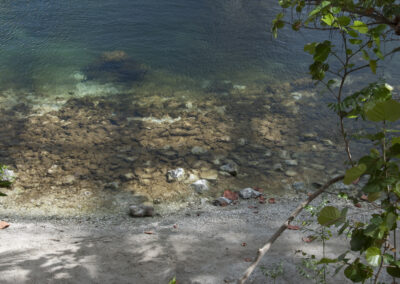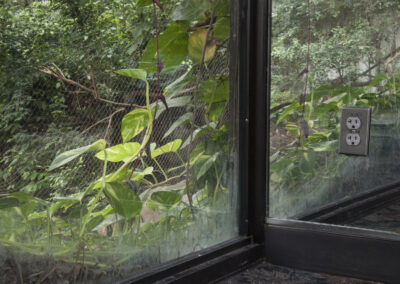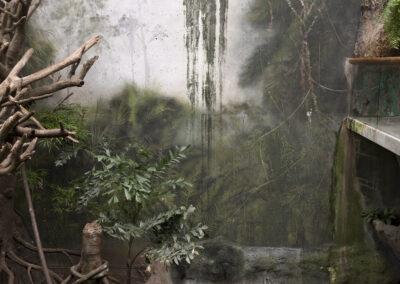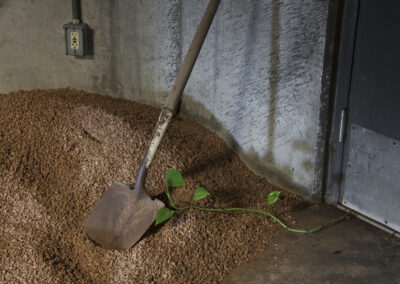The photographs in the series Terraria Gigantica: The World Under Glass, frame the world’s largest enclosed landscapes as possible impossibilities: Biosphere 2’s ocean in the Arizona desert, the Henry Doorly Zoo’s desert in the Great Plains of Nebraska, and Eden Project’s tropical rain forest in notoriously gray and cool Cornwall, England. These vivaria are enclosed environments where plants are grown amidst carefully constructed representations of the natural world to entertain visiting tourists. At the same time, however, they support scientific observation and research on the plants and animals housed under these ‘natural conditions’ that require human control of temperature, humidity, irrigation, insects, and weeds to cultivate otherwise impossible environments and species. Taken together, these architectural and engineering marvels stand as working symbols of our current and complex relationship with the non-human world.
Built in the late 1980s to research possible space colonization, Biosphere 2 was designed as an airtight replica of the Earth’s environment. This glass and metal-framed structure contains a tropical rain forest, mangrove wetlands, a fog desert, savannah grassland, and an ocean with a coral reef. No longer airtight, Biosphere 2 has been repurposed for research to study water, climate, and energy and how best to sustain planet Earth, ‘Biosphere 1,’. The Henry Doorly Zoo supports both education and research on a campus with the largest indoor jungle in the United States and the largest indoor desert in the world. Here, the illusionism of these immersive environments also incorporates the display of the animals that live there.
The mission of the Eden Project has always been to provide environmental conservation and sustainability. It currently houses over one million plants in the world’s largest conservatory and models sustainable practices in construction, waste reduction, and resource management.
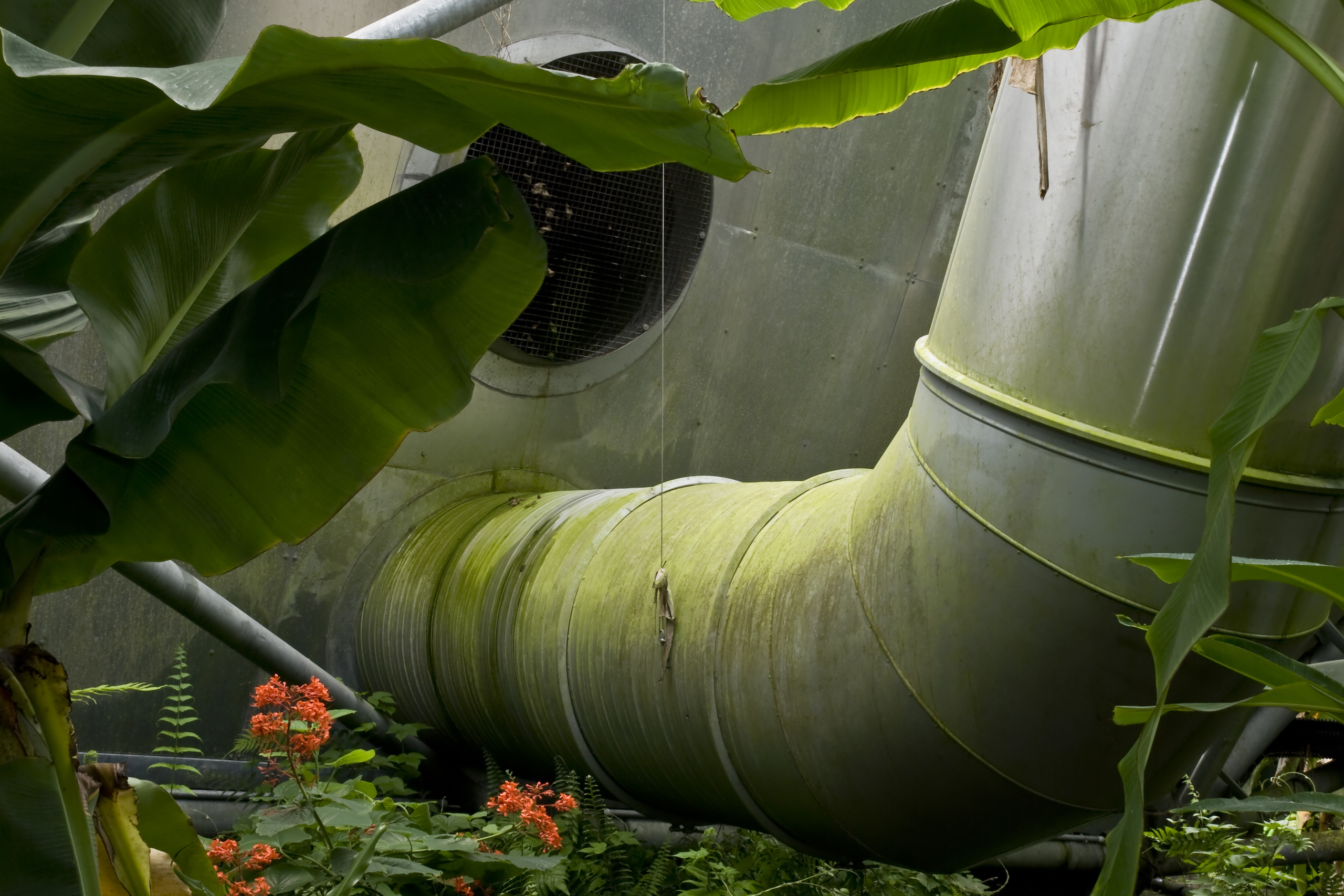
Dana Fritz; Green Ductwork, Eden Project; archival pigment print; 2007
About the artist
Dana Fritz is a Professor in the School of Art, Art History & Design at the University of Nebraska-Lincoln. She holds a BFA from Kansas City Art Institute and an MFA from Arizona State University. Her honors include an Arizona Commission on the Arts Fellowship, a Rotary Foundation Group Study Exchange to Japan, a Society for Photographic Education Imagemaker Award and Juror’s Awards in national exhibitions. Fritz’s work has been exhibited in over 80 venues in the United States, including the Phoenix Art Museum, Florida State University Museum of Fine Arts, the Griffin Museum of Photography and the Sheldon Museum of Art. International venues include Museum Belvédère in The Netherlands, Château de Villandry in France, Xi’an Jiaotong University Art Museum in China, and Toyota Municipal Museum of Art, Place M, and Nihonbashi Institute of Contemporary Arts in Japan. Fritz’s work has been published in numerous exhibition catalogs including IN VIVO: the nature of nature (Noorderlicht International Photofestival 2018,) Encounters: Photography from the Sheldon Museum of Art and Grasslands/Separating Species and was featured in print magazines Harper’s, Orion, and Photography Quarterly. Her portfolios Garden Views, Terraria Gigantica and Views Removed were selected for the Museum of Contemporary Photography’s Midwest Photographers Project from 2004-06, 2008-12, and 2015-21 respectively. Her work is held in several collections including the Nelson-Atkins Museum of Art, Kansas City; Museum of Contemporary Photography, Chicago; Bryn Mawr College Special Collections, Pennsylvania; Scottsdale Museum of Contemporary Art, Arizona; Weeks Gallery Global Collection of Photography at Jamestown Community College, New York; the Center for Art + Environment at the Nevada Museum of Art; and Bibliothèque Nationale de France, Paris. Fritz has been awarded artist residencies at locations known for their significant cultural histories and gardens or unique landscapes: Villa Montalvo in Saratoga, California; Château de Rochefort-en-Terre in Brittany, France; Biosphere 2 in Oracle, Arizona; PLAYA in Summer Lake, Oregon; and Brush Creek Foundation for the Arts in Saratoga, Wyoming. University of New Mexico Press published her monograph, Terraria Gigantica: The World under Glass, in 2017.
Additional resources
- Dana Fritz
- Terraria Gigantica The World under Glass – Book available from University of New Mexico Press.
- Dana Fritz: Terraria Gigantica – Lenscrath; Dec. 3, 2017.
- Biosphere 2: Why an Eccentric Ecological Experiment Still Matters 25 Years Later – Edge Effects; Dec. 15, 2016.
- Photographing Landscapes Under Glass – NET; Nov. 24, 2017.
- Grasslands / Separating Species – Book available from Radius Books.
- Dana Fritz – Page provided from the Museum of Contemporary Photography.

